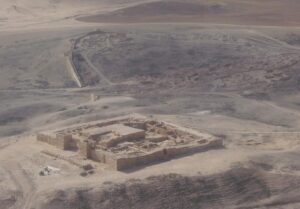Over 20 years ago, I was excavating a room on the south side of the Israelite fortress at Arad—it was the 1964 season—when Miriam Aharoni, wife of the director of the dig, came rushing over to warn us to be especially careful. We were uncovering an archive of old Hebrew letters, she shouted excitedly.
Mrs. Aharoni knew this—and we didn’t—because she had been “dipping” the potsherds from the previous day’s excavation of this area. The “dipping method,” now common on excavations in Israel, was originated by her husband Yohanan Aharoni at Arad. Each sherd is doused in water and examined to see whether it contains an inscription that cannot otherwise be observed because of the dust and dirt clinging to it. If no inscription appears, a light brush is then applied to see whether such an inscription is under dirt still stuck to the sherd. Dipping requires an extraordinary effort, because any Near Eastern dig will uncover thousands of sherds, but the results are often worth the effort. That was certainly true at Arad.
Read the rest of The Saga of Eliashib in the online Biblical Archaeology Society Library.
